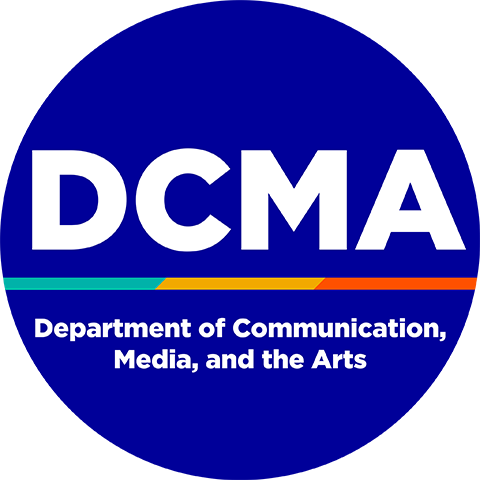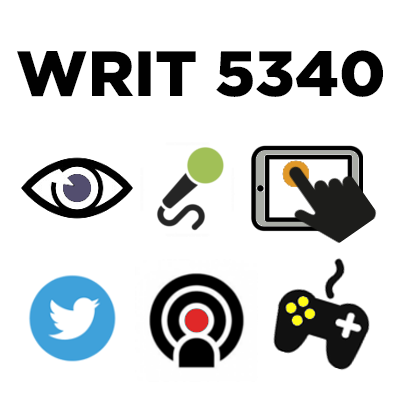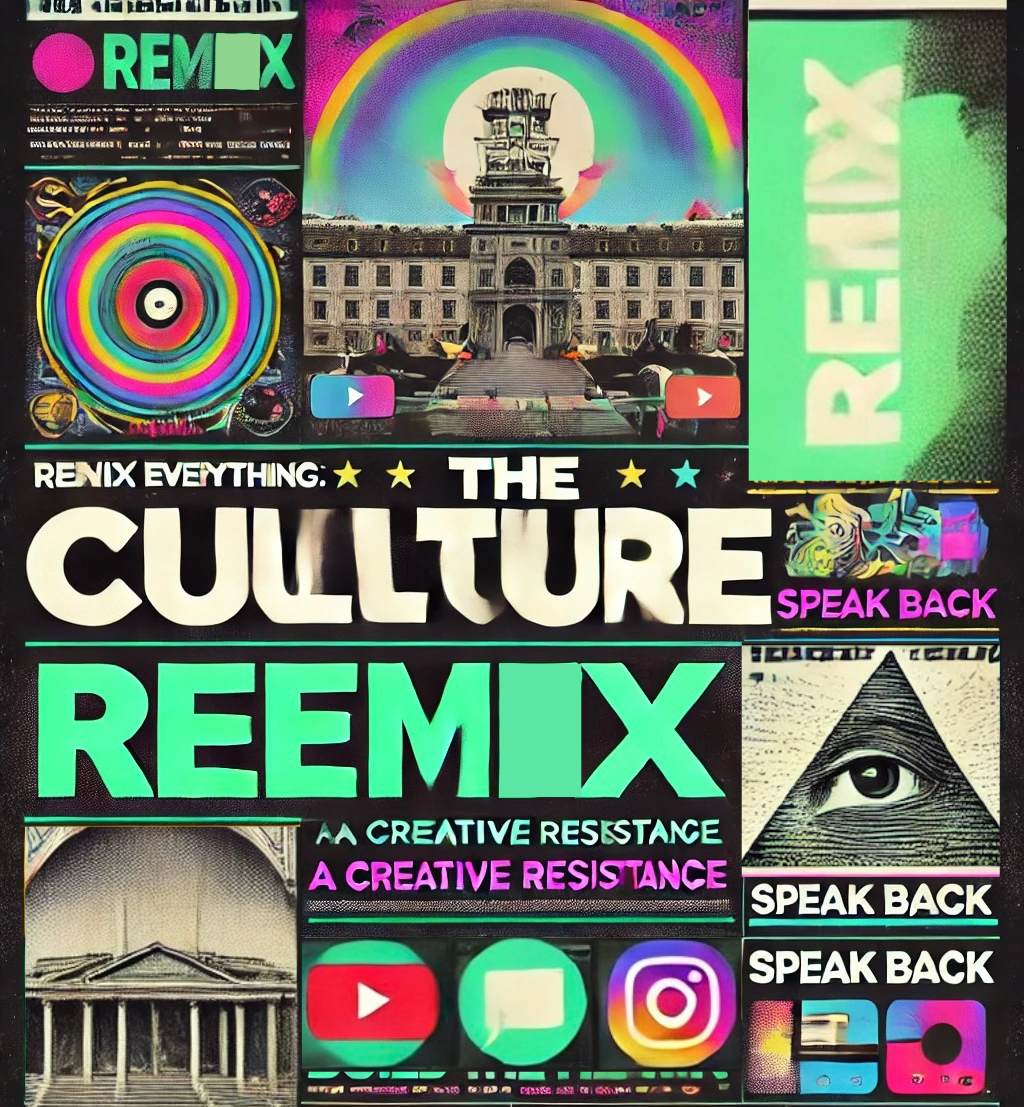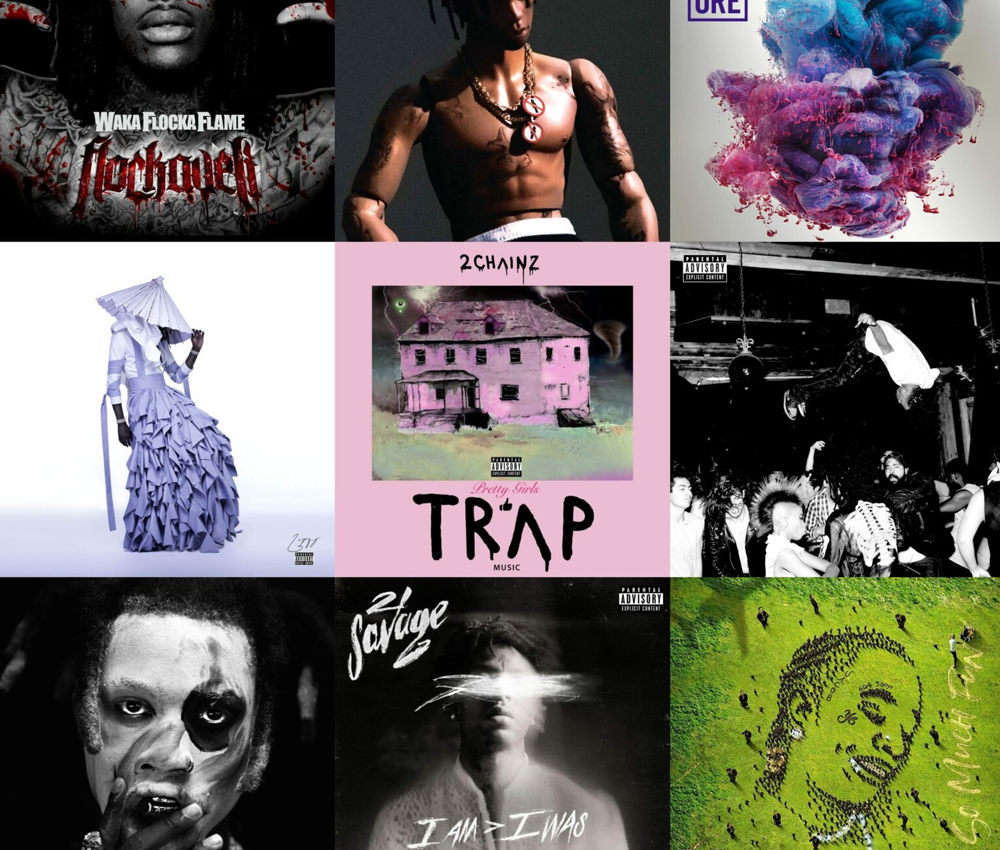
WRIT 5340: Multimodality and Digital Media is a course within NSU’s M.A. in Composition, Rhetoric, and Digital Media designed to introduce students to the scholarly conversations and professional practices connected to the creation of multimodal digital compositions that make use of images, sound, and other modalities.
The course asks students to compose 5 projects, which are each a re-imagining of an element of the traditional rhetorical canon. See descriptions below.
Project 1 – Parodying Writing Culture
Re-Imagined Element of the Rhetorical Canon: Invention
In “Hacking the Cool,” Craig Stroupe calls for writers to “appropriate” or hack contemporary technologies and genres to make them do what they weren’t designed to do, just as earlier writers hacked linear narratives to develop complex literary techniques for distorting time and plot. The information economy, he claims, calls on us to adopt the logic of consumer capitalism—to express ourselves through consumer choices and the data aggregation of knowledge work. Instead, Stroupe says we can hack the voices of the attention economy to make them speak “critical narrative.” In short, as new media writers we can engage in parody, appropriating digital and print genres for our own purposes. We can turn product reviews, Pinterest boards, and cereal boxes into cultural critiques. We can treat tweets as high literature and memes as philosophy. Writing culture, Stroupe claims, “bends and adapts available technologies and discursive logics” because doing so is “interesting.” Bolter and Grusin’s work on “remediation” suggests that such repurposing of media forms and content is a standard part of how new media form and develop, and how writers construct new forms to match their purposes. Working critically with new media thus means being willing to work with and against existing forms and media. For this project, your task is to create a parodic text that defies, plays with, or re-imagines a genre to serve something other than its original purpose.
Project 2 – Composing a New Media Manifesto
Re-Imagined Element of the Rhetorical Canon: Style
In “The Still-Unbuilt Hacienda,” Geoffrey Sirc traces composition’s distancing itself from its radical roots in favor of pre-professionalism and academic security. He explores composition’s history as a happening space–a space for thwarting the constraints of conventional forms, developing literacy through resistance and indeterminancy. He sees ties between composition and 60s counter-culture, especially artistic groups such as the Fluxists. Central to many of these radical movement’s break from convention was the genre of the manifesto–an announcement of one’s counter-intentions–new rules designed to mark a break with old forms and ways. Nowadays, businesses seek “disruptive innovation” to create new business models and leave old forms behind. For this assignment, you will create your own new media manifesto. It should be “new” in content and form. In other words, it should address an issue of composition and the place of new media in it, and it should embrace new media (video, audio, image) as a way to communicate one’s break from any dominant conventions or discourse community.
Project 3 – Re-Arranging the Classroom
Re-Imagined Element of the Rhetorical Canon: Arrangement
One of the affordances of digital technologies is the ability to revise continually and to quickly distribute work over time and space. Networked classrooms often adopt hybrid or otherwise non-traditional formats, and collectives can draw on what James Surowiecki calls the “wisdom of crowds” to accomplish tasks and make decisions in more representative, efficient, and equitable ways. In short, how our lives are arranged into work/play/rest, and what roles we can adopt and share as citizens in our local communities are heavily influenced by the technologies we use to manage our relationships with others. In this course, we will re-arrange the traditional model of classroom instruction by sharing what we know with each other, trading roles as teacher and student.
For this project, you will participate in the work of this class by doing the following:
- Helping to lead class discussion on assigned readings for that night. Please develop discussion questions based on the readings and/or your presentation to help us further engage with the reading material that week.
- Developing an in-class presentation and activity related to the week’s readings/theme/current project. Your goal is to animate issues, themes, or problems for the class; please do not simply summarize or outline the readings. Strive to illuminate a problematic moment, a difficult concept, a surprising claim or conclusion across the readings. Presentations can include alternative forms such as activities, games, workshops, or other formats that achieve the goals described above.
Project 4 – Composing with Sound
Re-Imagined Element of the Rhetorical Canon: Delivery
For the Greeks, delivery almost universally referred to oral delivery–the ability to give an effective speech in the public agora or courtroom. And delivery continues to have connections to speech, despite the ascendance of print and the more recent return to what Walter Ong calls “secondary orality.” Technological innovations, beginning perhaps with Sony’s Portapack in the 70s, opened up video recording to spaces beyond the TV studio, prompting many artists and individuals to begin experimenting more with multimedia. Nowadays, we have diverse options for how to deliver content, and audio plays an increasing role in how we remember old information, access new information, and connect with others.
For this project, you will compose a project that is audio-based. You can look back at readings we have done, and to your own life to consider the genres that could be created, including: audio essay, podcast, oral history, soundscape, or other audio-focused projects.
Project 5 – Going Pro
Re-Imagined Element of the Rhetorical Canon: Memory
Students will create a “professional” new media text for public or academic consumption. This could be geared toward publication in an academic journal, support a professional organization, or be designed for performance as part of a public installation. Either way, it could include a range of media. This is your final project in this course that will hopefully pull together some of the various skills you’ve been working on, and allow you to focus on producing something that is “publication-ready.” In short, it will put into practice what you remember from our time together and establish how you will be remembered. You might think of producing some resource for NSU DMCA programs, or even a client outside of the university.







